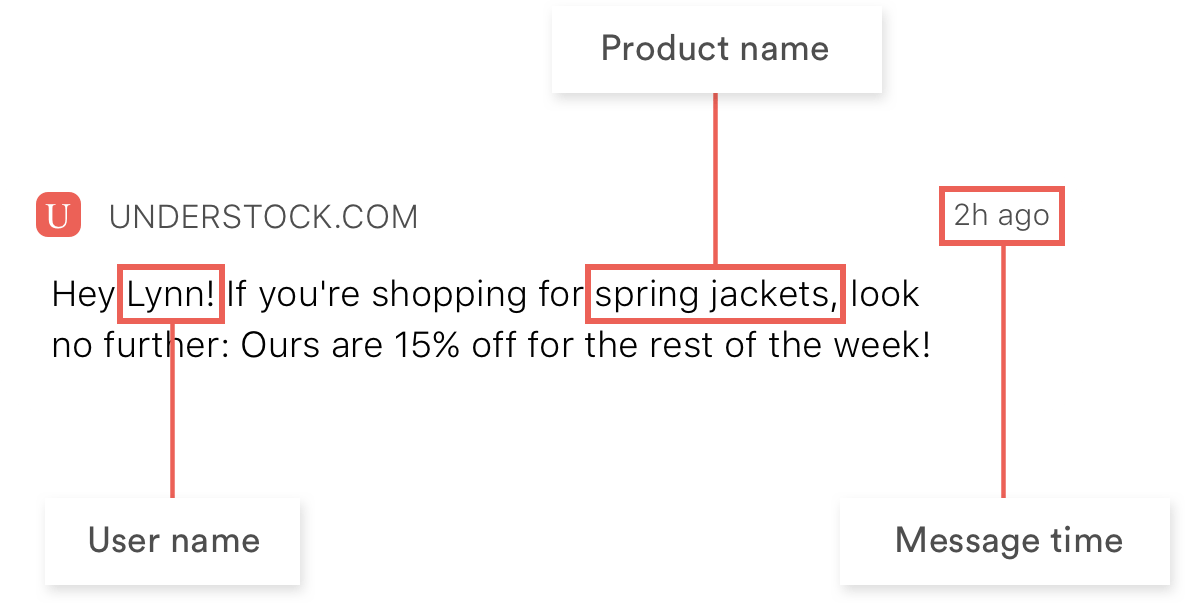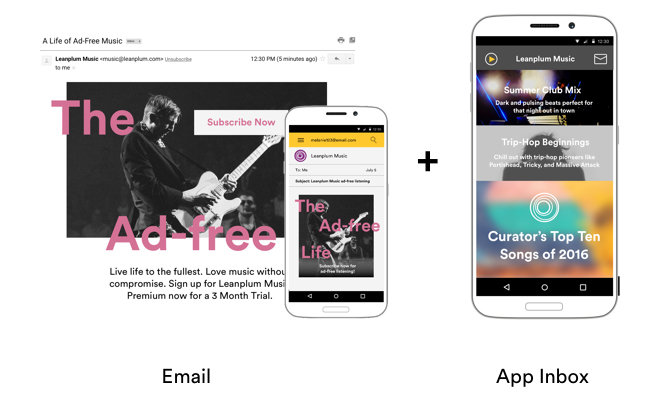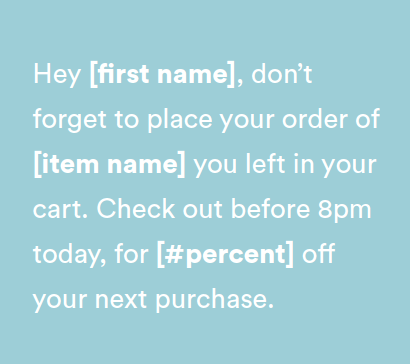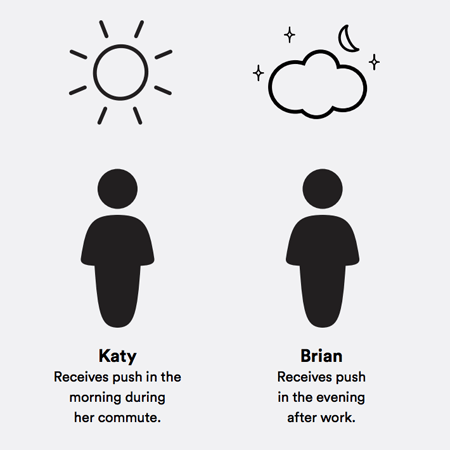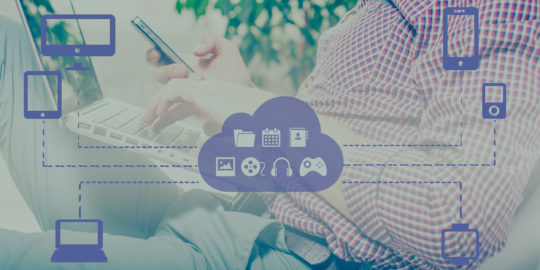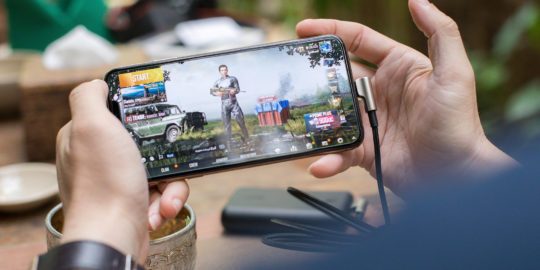Source: Unsplash
“All clothes are 15 percent off — start shopping now!”
You’ve probably seen promotions like this on TV, websites, and traditional email blasts. They’re prevalent on mobile as well. If a retail app is running a sale like this one, the marketing team might promote it through push notifications, emails, in-app messages, and more. These promotions help increase conversions by making customers aware of the sale.
But this is the oldest trick in the book. As consumers, we’ve all seen promotional marketing campaigns before, and they all blend together. Unless you happen to be in the market for new clothes, it’s not likely that a generic promotion will make you buy something.
In the worst case scenario, a mobile message like this might actually be counterproductive: it could disrupt users who opted into push but aren’t interested in the sale.
Luckily, there’s a solution. Good mobile messages are all about personalization.
Imagine a marketing message that’s tailored to you in every way. The message might:
- Address you by name
- Be delivered on the channels you’re most likely to check
- Promote a product or category that you recently browsed
- Arrive right when you have free time to shop, like a Sunday morning
A personalized message like this is much more than a generic promotion. Unlike the sales and ads of the past, these messages feel less like blast marketing and more like a direct conversation. It’s as if the company is offering an exclusive discount just for you — and the discount just so happens to be for an item you wanted.
There really is a way to craft the perfect mobile message. Check these categories off one by one, and by the time you’re through this post, you’ll be ready to deliver a personalized message to any of your app users.
Step 1: Audience Segmentation
The first step to engaging your audience is to define your audience. It sounds redundant, but this is an easy step to miss if you’re not careful.
It’s unlikely that the exact same promotion would appeal to your whole app audience. And even if it does, it’s still better to phrase the message in a different way or deliver it through a different channel. Everyone is unique — you can’t create a personalized experience without respecting these differences.
For our example, let’s say our retail app is trying to drive early conversions among new users. In this case, we could limit our audience to users who’ve launched the app less than five times and who haven’t made a purchase yet. Now that we know who we’re writing for, it will be easier to craft the rest of the message in a more personalized way.
Step 2: Delivery Channel
Don’t start writing copy yet — first, you must decide on which channels you’ll send the message.
Delivery channel affects how users will perceive your message, regardless of content. Mobile push, web push, in-app messages, App Inbox messages, and email are all unique channels with their own quirks. Consider the pros and cons of each before committing.
For this use case, driving early conversions among new users, using a combination of mobile push notifications, web push, and email might be our best bet. Since we’re targeting new users, the audience may not be in the habit of regularly opening the app — which means they’ll miss in-app and App Inbox messages.
Both mobile and web push notifications are valuable because they reach users outside the app. They help pull in new users who aren’t in the habit of visiting your app yet. However, not everyone opts into push — and that’s where email comes in. We can deliver a push notification to every user in our segment who has opted in, and we can fall back on an email for those who haven’t.
Step 3: Message Content
Once the channel is settled, it’s finally time to write your mobile message. “Content” is a broad topic — there are a few user attributes to consider, such as:
- Name
- Location
- Technology
- In-app behavior
Some of these attributes can be personalized with ease. For instance, it’s usually a good idea to include the recipient’s first name in your message. This technique isn’t new, but it’s still a simple way to make messages feel more direct and personal.
Location and device are more situational. Sometimes they won’t matter, but at other times, they make the difference between a good message and a phenomenal message.
Location-based messages can reference events and holidays that only happen in a particular country. You can even reference local weather conditions if it’s relevant (e.g. a clothing store could promote winter jackets in the fall if the coming week will be cold).
Meanwhile, if you’re using rich media in your push notifications, remember that certain operating systems might not be able to display them. You can segment out users on older systems and send a separate, text-only version of the promotion.
User behavior is where content personalization gets interesting. One of the best ways to personalize app messages is by taking past browsing habits, preferences, or purchases into account. You could reference a specific item that the person browsed (e.g. a computer mouse) and promote that, or complementary products in the same category (e.g. a mousepad).
Step 4: Message Timing
It would be a waste of a perfectly personalized message to blast it out the minute you finish writing. Mobile users are always on the go; you can’t expect people to instantly read your message and convert. Timing is critical for reaching users when they’re actually willing to engage.
Unfortunately, manual timing is difficult. At scale, it’s hard to take each user’s work and leisure schedules into account. And personalizing based on time zone isn’t enough. You can make generalizations, like sending promotions at 9pm local time on a weekday, but there’s no way to manually figure out if each person is free at that time.
Leanplum’s solution to this problem is Optimal Time. This feature is a machine learning algorithm that automatically analyzes the right time to send messages for each app user, depending on their past behavior. This way, you don’t have to wonder if 9pm or 10pm is the perfect time for your push. The algorithm will look at each user individually and send the message when they’re most likely to engage.
Step 5: A/B Test the Final Product
Congrats — you’ve crafted the perfect mobile message! But the campaign isn’t over yet. No matter how many best practices you follow, we always recommend A/B testing your campaigns to confirm their effectiveness.
To start, you can A/B test your personalized message against a generic blast just to confirm that personalization helps. If that works, proceed to test the message against other types of personalization. For example, maybe adding the recipient’s name affects engagement rates, but mentioning their location doesn’t. Maybe push notifications outperform emails, or vice versa.
With A/B testing, you don’t have to rely on general guidelines. Put your message to the test and let users show you if you’re on the right track.
The Perfect Personalized Message
At the end of these five steps, we’re left with the perfectly personalized mobile message. Personalization is a surefire way to catch your users’ attention, and our approach leaves no angle unexplored. The perfectly personalized message is customized in several different ways — a far cry from simple name fields.
For more on personalization, learn how Leanplum helps you deliver campaigns that drive conversions, loyalty, and retention.
—
Leanplum is the mobile marketing platform built for engagement. We help brands like Tinder, Grab, Tesco, and Zynga orchestrate multi-channel campaigns — from messaging to the in-app experience — all from a single, integrated platform. Schedule your personalized demo here.



